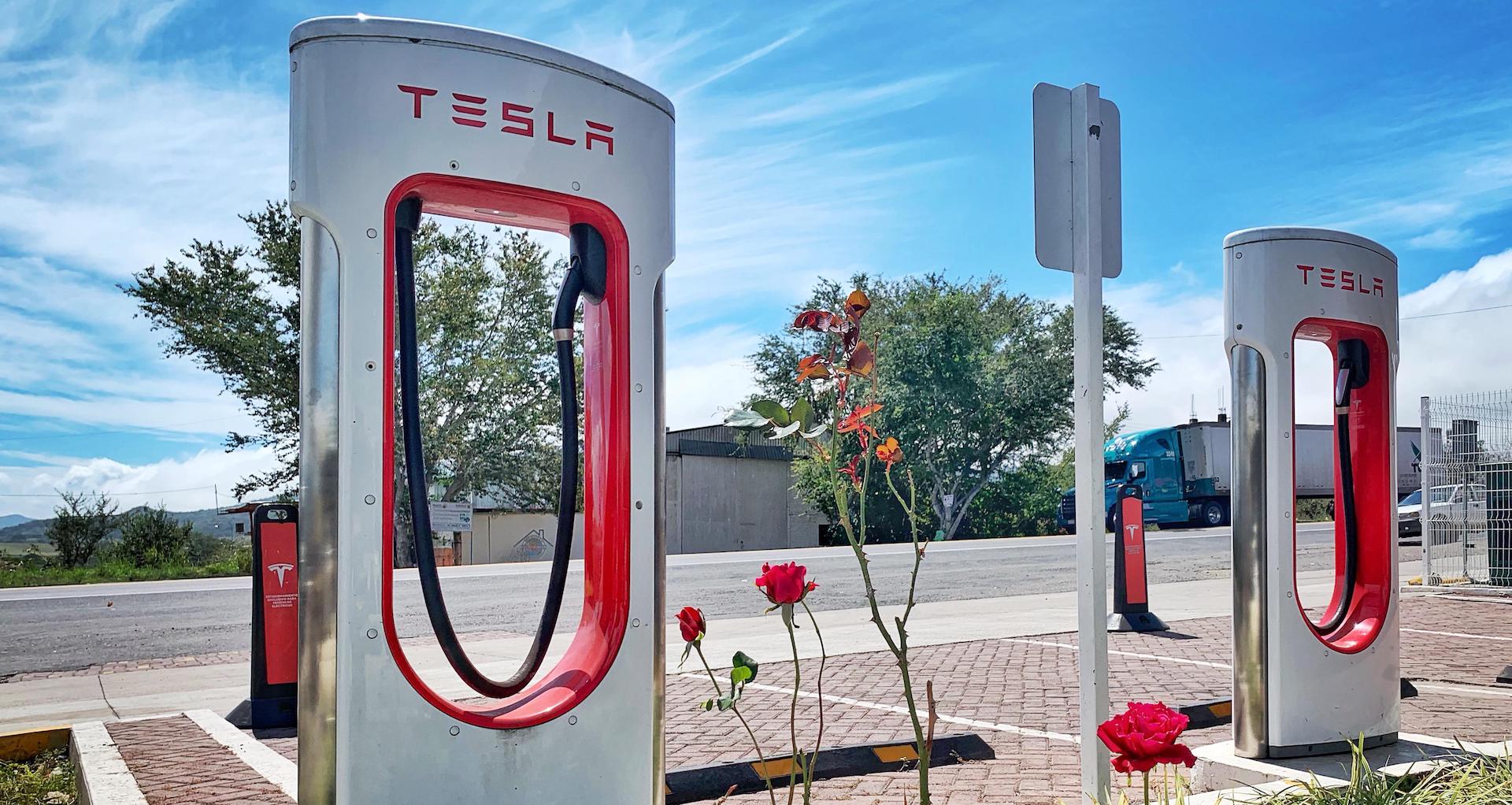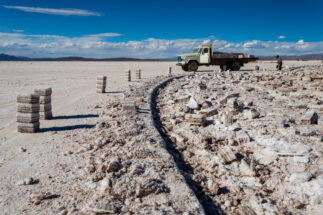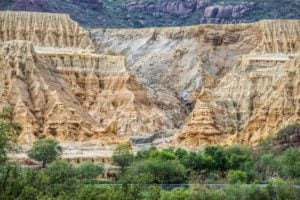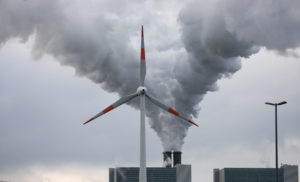Mexico recently gained another foothold in the China-driven global lithium trade with the announcement by Ganfeng Lithium—one of the world’s largest producers and a supplier to Tesla—that they will construct a lithium-ion battery recycling plant in the country.
Wang Xiaoshen, CEO of Ganfeng Lithium said the plant will supply the growing US electronic vehicle (EV) market and will recycle batteries from Tesla cars, as well as from the electric buses made in China that are used throughout Latin America.
“Chinese electric buses have been exported to South American countries for years and now is about time to recycle,” Wang told the Financial Times. “And Tesla has been selling in Mexico since 2012, so in the next couple of years they [the batteries] will be ready for retiring.”
244 million
tonnes of lithium reserves were discovered by Bacanora in Sonora state
Along with British minerals company Bacanora, Ganfeng is a partner in Mexico’s first lithium mine in the northern state of Sonora, which counts on one of the largest deposits in the world. Together, the Sonora mine and battery recycling plant will become a major node in the regional supply of lithium and other valuable elements, seemingly edging closer to the ideal of ‘closed cycles’ of production, whereby energy expended in manufacturing is returned to the production process through recycling, reducing emissions overall.
As a 2016 study by researchers at the Australian National University found, recycling lithium-ion batteries—which usually last two to three years or 300 to 500 charge cycles (whichever comes first)—“reduces energy consumption, reduces greenhouse gas emissions, and results in considerable natural resource savings when compared to landfill.”
A 2019 study published in Nature magazine observes that “end-of-life LIB [lithium-ion battery] recycling could provide important economic benefits, avoiding the need for new mineral extraction and providing resilience against vulnerable links and supply risks in the LIB supply chain”. Lithium battery recycling is thus a critical part of the global move away from reliance on fossil fuels.
One of the authors of the Nature study, Emma Kendrick (Chair of Energy Metals, University of Birmingham), explained that LIB recycling means “taking the battery packs back to their constituent materials and parts.”
Kendrick told Diálogo Chino that certain components are reclaimed by shredding the cell of the battery and applying heat to separate materials, as in pyrometallurgical processes such as refining and smelting. Other materials need less intensive processing for recovery, such as physical sorting. Components that are reclaimed include graphite, lithium, cobalt, nickel, aluminium, copper and manganese which can then be used for a variety of purposes. Lithium and manganese can be used in cement and cobalt in animal feed and stainless steel.
Batteries may also be re-used in their entirety, said Kendrick: “[I]f the batteries still have some lifetime associated with them, they can be re-deployed in less demanding applications such as in stationary energy storage, where they are slow charged and slowly discharged.”
Projects like the one in Sonora are unfortunately going to be like an experiment
Ganfeng’s announcement of the battery recycling plant in addition to the mining project was anticipated by Mexican politicians earlier in the year, with then-resources minister Victor Toledo declaring lithium to be ‘the new oil’. For a country whose economy has historically been underwritten by petroleum, Mexico now has a chance to join the global energy transition away from fossil fuels.
Dr Guillermo Tiburcio Munive, a chemical engineer at the University of Sonora, told Diálogo Chino that he expects having the battery recycling plant will result in “increased awareness of [energy] recycling in society” in the state. He also said he believes it will contribute to “the creation of direct and indirect jobs” and “the development of industry as it may be attractive for battery manufacturers to be close to their supplier.”
Lithium in Mexico: bring light to troubled lands?
There are high hopes that Ganfeng’s recycling plant will bring employment opportunities and wealth that might be re-invested in much-needed social infrastructure in Sonora. With a view to maximising these opportunities, some advocate a new state-owned entity to regulate lithium mining and retain profits within Mexico. Alejandro Armenta, a senator from the ruling Morena party and head of the Senate’s finance commission, is leading the current charge, saying in a Senate plenary session that “[w]e cannot allow lithium to remain in the hands of foreigners.”
Armenta currently has a proposal before the Senate that seeks to expand Article 27 of Mexico’s Constitution which pertains to the public utility of the land and its resources. In the proposal, which outlines plans for a state lithium company called ‘Litiomex’, Armenta suggests that state ownership of lithium reserves in Bolivia allowed for environmental protection to be prioritised. In Mexico, such an entity would also maximise transparency and reduce corruption, he claims.
Beatriz Olivar, a researcher in engineering at the National Autonomous University of Mexico, is sceptical about environmental protection in the nascent Mexican lithium industry, regardless of whether it is managed by a public or private company, “the environment is always relegated and the affected voices are not heard”, she said.
Environmental and social concerns
The Bacanora project in Sonora will be an open-pit mine, “one of the most destructive techniques that exist, because explosives are used to remove land for deep pits that impact biodiversity and then toxic substances such as cyanide or arsenic are used”, Olvera told OutletMinero in July.
Similarly, there is little reason to presume that state ownership might provide greater security for mining operations. Foreign mining projects in Mexico routinely reckon with blockades by local communities who disagree with the presence of mines. Mines are also targeted by powerful organised criminal groups who engage in extortion and theft of precious minerals and metals.
While the Mexican government has recently introduced a special security force charged with increasing protection for the mining sector, corruption and the effectiveness of state authorities remains a problem. As Human Rights Watch observes; “Mexican authorities resolve only about 1 percent of crimes, including police abuses” while “many police officers receive threats and payoffs from organised crime groups”.
Armento’s initiative does address the issue of supply chain governance, as China solidifies its control over the global electric vehicle supply chain. A recent report on the matter by London-based market forecasters Benchmark Mineral Intelligence notes that in addition to China’s lithium mining projects, it is mining and producing other ‘chemical links’ in the EV chain, such as manganese.
Wang Xiaoshen, CEO of Ganfeng argued against nationalisation of lithium and said the Bolivian case proved to be counterproductive. “Bolivians don’t allow foreign companies to own mining properties,” Xiaoshen told the Financial Times. “And that’s a big hurdle for attracting investment.”
Lithium in Sonora: Risks to workers
Whoever oversees the process of recycling lithium batteries, they must also reckon with the risks to factory workers in the processes of extraction, according to Kendrick. An intensive process that also produces harmful emissions, recycling plants must be equipped to maximise the extraction of the metal and to filter toxins that could cause serious illness to workers.
Andrés Ángel, a mining expert at the Inter-American Association for the Defense of the Environment, said in a recent interview with Spanish outlet EFE that there are many unknowns as Mexico takes its tentative first steps towards a circular lithium industry.
“Projects like the one in Sonora are unfortunately going to be like an experiment, a guinea pig, which is going to show us a little bit of everything that can happen.”








